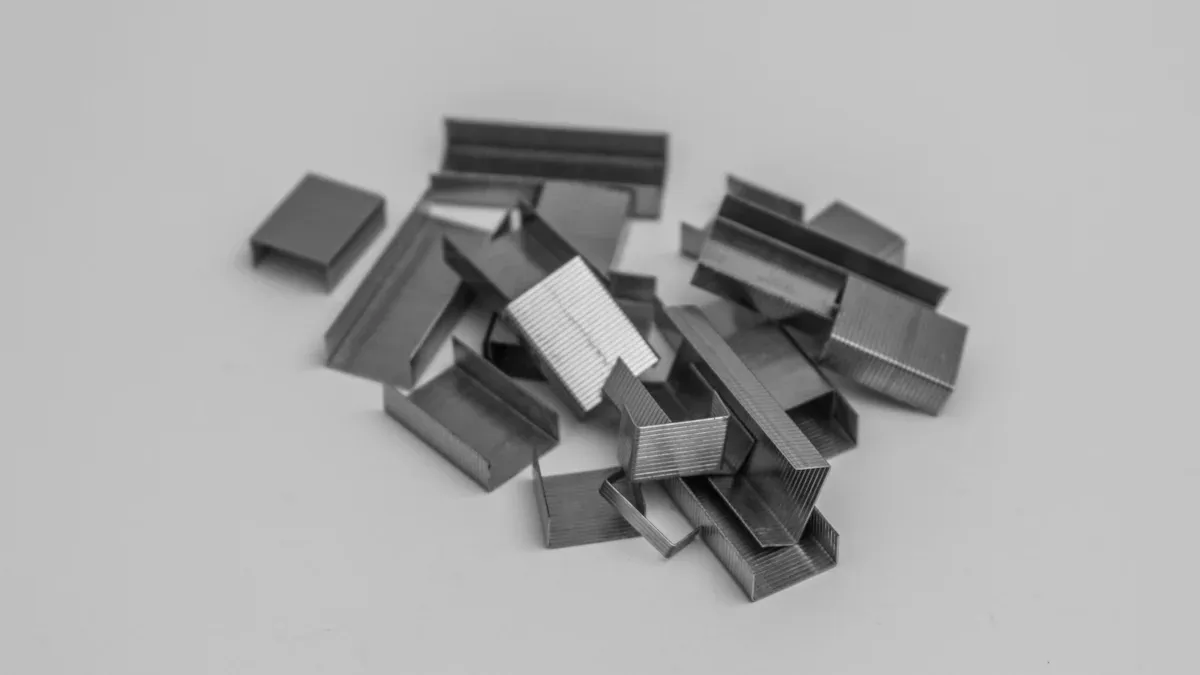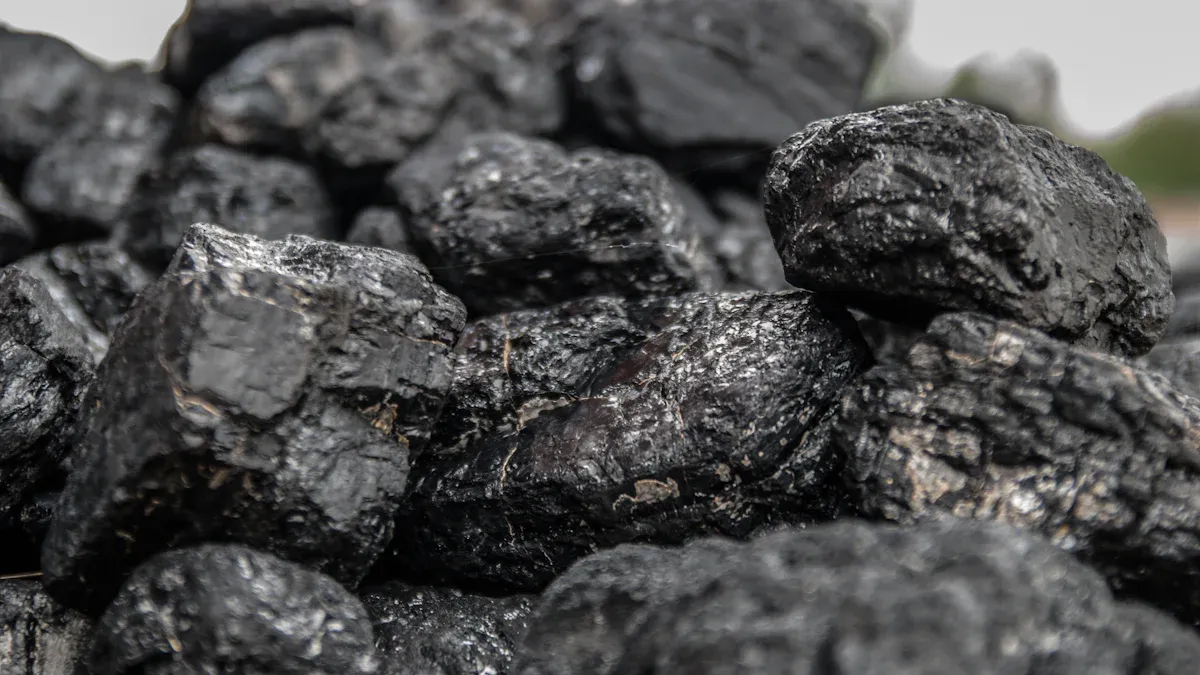
Graphite susceptor annealing enhances material properties by exposing the GRAPHITE SUSCEPTOR to controlled thermal conditions. By carefully preparing and monitoring the process, you ensure precise temperature control and uniform heating. This technique optimizes the performance of the 5. GRAPHITE SUSCEPTOR in applications requiring high thermal conductivity and stability. With attention to detail, you achieve consistent results and improve efficiency.
Key Takeaways
- Make sure to clean the graphite susceptor well first. This helps it heat evenly and avoids bad reactions.
- Watch the annealing process closely with good tools. This lets you fix problems fast and keep results steady.
- Cool the susceptor slowly after annealing. Slow cooling stops cracks and keeps it strong.
Step 1: Preparing Graphite Susceptors
Cleaning and Debris Removal
Before starting the annealing process, you must clean the graphite susceptor thoroughly. Dust, debris, or residue can interfere with heat distribution and compromise the results. Use a soft, lint-free cloth or a gentle cleaning solution to remove contaminants. Avoid abrasive materials that might scratch the surface. If the susceptor has intricate designs or grooves, compressed air can help dislodge particles from hard-to-reach areas. A clean surface ensures uniform heating and prevents unwanted reactions during annealing.
Inspecting for Damage or Defects
After cleaning, inspect the graphite susceptor for any signs of damage. Cracks, chips, or warping can affect its performance and lead to uneven heating. Hold the susceptor under a bright light to spot imperfections. If you find any defects, replace the susceptor to avoid process inefficiencies. Regular inspections help maintain the quality of your annealing process and extend the lifespan of your equipment.
Ensuring Material Readiness
Once cleaned and inspected, confirm that the graphite susceptor is ready for use. Check its dimensions and ensure it fits properly in the annealing chamber. Verify that the material meets the required specifications for your application. Proper preparation minimizes errors and ensures the susceptor performs optimally during the annealing process.
Step 2: Loading Graphite Susceptors into the Annealing Chamber

Proper Placement Techniques
When loading the graphite susceptor into the annealing chamber, you must ensure proper placement. Position the susceptor securely on the designated platform or holder. Misalignment can lead to uneven heating, which affects the annealing process. Use alignment guides or markers, if available, to achieve precise placement. If your chamber supports multiple susceptors, maintain equal spacing between them. This arrangement ensures uniform heat distribution and prevents thermal inconsistencies.
Handling Procedures to Avoid Contamination
Handle the graphite susceptor with care to avoid contamination. Always wear clean, lint-free gloves when touching the susceptor. This prevents oils or dirt from transferring to its surface. Use dedicated tools, such as tongs or clamps, to minimize direct contact. Avoid placing the susceptor on unclean surfaces during the loading process. Contamination can interfere with thermal conductivity and compromise the quality of the annealing results.
Chamber Configuration for Uniform Heating
Configuring the annealing chamber correctly is essential for uniform heating. Check that the heating elements are functioning properly and evenly distributed. Adjust the chamber’s internal components, such as reflectors or shields, to direct heat efficiently. If your chamber has adjustable zones, calibrate them to match the susceptor’s size and material properties. A well-configured chamber ensures consistent thermal exposure, enhancing the performance of the graphite susceptor.
Step 3: Setting Thermal Parameters for Graphite Susceptors
Determining Optimal Temperature Ranges
Selecting the right temperature range is crucial for effective annealing. You need to consider the material properties of the GRAPHITE SUSCEPTOR and the specific application requirements. Start by consulting the manufacturer’s guidelines or industry standards for recommended temperature ranges. For most graphite-based materials, temperatures between 800°C and 1200°C work well. Use a programmable controller to set precise values. Avoid exceeding the material’s thermal limits, as this can cause structural damage or degradation.
Tip: Conduct a small-scale test to verify the chosen temperature range before proceeding with full-scale annealing.
Configuring Ramp Rates and Dwell Times
Ramp rates and dwell times determine how the temperature changes during the annealing process. Gradual ramp rates prevent thermal shock, which can crack or warp the GRAPHITE SUSCEPTOR. Set the ramp rate to increase temperature by 10°C to 20°C per minute. Once the target temperature is reached, dwell times allow the material to stabilize. For most applications, dwell times of 30 to 60 minutes are sufficient. Use a timer to ensure accuracy and consistency.
Adjusting Parameters for Specific Material Types
Different materials require tailored thermal settings. If your GRAPHITE SUSCEPTOR is coated or treated, adjust the parameters to accommodate these modifications. For example, coated susceptors may need lower temperatures to avoid damaging the coating. Similarly, materials with high thermal conductivity may require shorter dwell times. Always review the material specifications and adjust the settings accordingly. This ensures optimal performance and prevents unnecessary wear.
Step 4: Monitoring the Annealing Process with Graphite Susceptors
Real-Time Monitoring Tools
You need reliable tools to monitor the annealing process in real time. Temperature sensors, infrared cameras, and thermal imaging systems provide accurate data during the procedure. These tools help you track temperature changes and ensure the graphite susceptor reaches the desired thermal profile. Use software that visualizes the data for easier interpretation. Real-time monitoring allows you to make adjustments promptly, preventing errors and ensuring consistent results.
Identifying and Addressing Process Deviations
During annealing, deviations can occur due to equipment malfunctions or unexpected material behavior. You must identify these issues quickly to avoid compromising the process. Look for signs like uneven heating or temperature fluctuations. If you notice deviations, pause the process and investigate the cause. Adjust the thermal parameters or chamber configuration as needed. Addressing deviations promptly ensures the graphite susceptor maintains its integrity and performs as expected.
Ensuring Consistency in Thermal Profiles
Consistency in thermal profiles is essential for achieving optimal annealing results. You should verify that the heating remains uniform throughout the process. Use monitoring tools to check for temperature stability across the susceptor’s surface. If inconsistencies arise, recalibrate the chamber or adjust the placement of the susceptor. Consistent thermal profiles enhance the material’s properties and ensure the graphite susceptor meets application requirements.
Step 5: Cooling and Post-Annealing Analysis of Graphite Susceptors

Controlled Cooling Techniques
Cooling the graphite susceptor properly is just as important as the heating process. Rapid cooling can cause thermal stress, leading to cracks or warping. To avoid this, you should use controlled cooling techniques. Gradually reduce the temperature inside the annealing chamber by adjusting the cooling rate. For most applications, a slow and steady decrease in temperature ensures the material stabilizes without damage. If your equipment supports it, use programmed cooling cycles to maintain precision. Controlled cooling preserves the structural integrity of the graphite susceptor and prepares it for post-annealing evaluation.
Conducting Quality Checks
Once the cooling process is complete, you need to perform quality checks. Start by visually inspecting the graphite susceptor for any signs of damage, such as cracks or discoloration. Use measurement tools to verify its dimensions and ensure they meet the required specifications. If your application demands high precision, consider using non-destructive testing methods like ultrasonic or X-ray inspections. These checks help you confirm that the annealing process was successful and that the susceptor is ready for use.
Evaluating Material Properties Post-Annealing
After quality checks, evaluate the material properties of the graphite susceptor. Test its thermal conductivity, electrical resistance, and mechanical strength to ensure it meets performance standards. Use specialized equipment to measure these properties accurately. Compare the results with baseline data to identify any improvements or deviations. This evaluation helps you understand how the annealing process has enhanced the susceptor’s performance. By analyzing the results, you can refine your process for future applications.
Mastering the five steps of graphite susceptor annealing ensures consistent results and improved material performance. By preparing, loading, setting parameters, monitoring, and analyzing, you optimize efficiency and reduce errors. Each step plays a vital role in achieving high-quality outcomes, making your annealing process reliable and effective for demanding applications.
FAQ
What is the purpose of annealing graphite susceptors?
Annealing improves thermal conductivity, mechanical strength, and stability. It prepares the susceptor for high-performance applications requiring precise heat management and durability.
Can you reuse graphite susceptors after annealing?
Yes, you can reuse them if they pass post-annealing quality checks. Regular inspections ensure they remain functional and meet performance standards.
What tools help monitor the annealing process?
Use temperature sensors, infrared cameras, and thermal imaging systems. These tools provide real-time data to ensure consistent heating and optimal results.
Tip: Always calibrate monitoring tools before starting the process for accurate readings.


